Difficult Choices
Americans seem to be consumed by the idea of choice. But choice can be a burden as well as a blessing. Many Christian parents are confronted today with the complicated choice of how best to educate their children. As the moral standards in our society move further and further from biblical ones, the importance of choice looms ever larger.
In a recent conversation with a friend, this dilemma became even more evident to me. His daughter is about to enter high school. She’s bright and concerned about living Christianly. But her parents are afraid that her desire to be part of the “in” group, to be accepted, could cause her to be negatively influenced by her peers.
The public high school in town is very good. It could be considered above average in many ways. It offers a good academic program and a wide variety of activities. But these parents have some important reservations about sending their daughter there. Like most Christians, they are aware that public schools, by law, are supposed to maintain a strict neutrality concerning religious topics. This has, in recent years, been interpreted by many school administrators to mean that Christian views are to be removed from the classroom.
My friends are also aware that the ethical standards they believe are central to the upbringing of their children are considered quite unusual by most of the students, teachers, and other parents in the community, and that this would place an added burden on their daughter.
They don’t feel capable of home schooling, although they are sympathetic with the philosophy of that movement. A Christian school is available, but it is an hour’s drive away and represents a substantial financial commitment.
These friends, like many other people, are trying to sort through one of the more perplexing dilemmas facing our nation’s parents. By what criteria should parents choose their children’s schools?
Education is a fairly emotional topic: we all tend to return to our own mental images of what it means to be schooled. Some remember public schooling as a joyous time with Christian teachers and a peer group that resulted in lifelong friendships. Others may remember a private school setting that was overly restrictive, resulting in a negative experience. But should we make the decision of how to educate our children today based on how things were twenty or thirty years ago, even in the same school system?
A helpful book titled Schooling Choices: An Examination of Private, Public, & Home Education, edited by Dr. Wayne House, allows three advocates to argue for their favorite schooling environment. Dr. David Smith, a superintendent of schools in Indiana, argues for parents making use of our public schools. Dr. Kenneth Gangel, a professor at Dallas Theological Seminary, defends the Christian school, and Greg Harris, the director of Christian Life Workshops, promotes home schooling. No conclusions are offered by the book; instead, the issues are developed by the proponents themselves, and then critiqued by the other two writers.
If we assume that Christian parents have a God-given responsibility to raise and educate their children in a manner that glorifies God, this discussion of educational choices becomes central to our parenting task. My own children have experienced all three forms of educational institutions. But rather than simplifying the dilemma, this experience has taught me to be hesitant to tell a parent that there is one best educational environment for every child in all circumstances.
Biblical Evidence
In support of a Christian school setting, Dr. Kenneth Gangel argues that all of a child’s education should be Bible-centered. Ephesians 6:4 states, “Parents, do not exasperate your children, instead, bring them up in the training and instruction of the Lord.” If we tell our children to live biblically but train them in a secular setting, we may indeed exasperate them. The question goes beyond sheltering our children from a classroom that is openly hostile to Christianity. Even a neutral approach, if that were possible, would be insufficient. The whole teaching environment must be centered around a Christian worldview.
Public school superintendent Dr. David Smith feels that this is not necessarily true. Quoting Luke 8:16 and Matthew 28:19-20, he prompts Christians to be salt and light and to fulfil the Great Commission in the public schools. Dr. Smith sees public schooling as an experience that will strengthen our children, preparing them for the real world.
Dr. Gangel replies that nowhere does the Bible say, “Give a child twelve years of training in the way he should not go, and he will be made strong by it.” Instead, God tells us, “Train a child in the way he should go, and when he is old he will not turn from it.”
Both Kenneth Gangel and Greg Harris emphasize the importance of peer influence or companionship. Both of them quote Proverbs 13:20, “He who walks with the wise grows wise, but a companion of fools suffers harm,” and 1 Corinthians 15:33, “Do not be deceived, bad company ruins good morals.” It seems clear that our children’s closest companions are to view morality biblically.
Luke 6:40 states, “Every one when he is fully taught will be like his teacher.” Although David Smith feels that public school teachers are a conservative group and that many are Christians, both Gangel and Harris feel that having a Christian teacher is a requirement that should not be left to chance. Greg Harris goes one step further, arguing that parents are in the best position to teach and be companions to their children.
Another major concern is the nature of knowledge and true wisdom. If we believe that “the fear of the Lord is the beginning of knowledge” (Prov. 9:10) and that “in Christ are hidden all the treasures of wisdom and knowledge” (Col. 2:3), then the ability of a public school to give our children a true perspective on the way things really are is placed in question. Perhaps public schools could function as vocational education centers, but even then moral questions would be involved.
Although we can see how Christian public school teachers might influence their students, they will be in constant conflict with textbooks that assume a naturalistic viewpoint and a curriculum that steers clear of controversy. Greg Harris argues that nothing will kill the zeal of a Christian teacher quicker than a public school setting. He feels that many Christians imagine they are having a quiet impact and rationalize that someday the fruit will be more visible, when in fact they are promoting a non-Christian worldview by dividing their professional life from their Christian faith.
Both Harris and Gangel would argue that Christians need to integrate their beliefs with all of their activities. This is becoming more and more difficult in the public school setting, where textbooks, self-esteem programs, drug- and sex-ed curricula, and even the teacher’s unions have adopted a view of humanity and morality that portrays mankind as autonomous from God.
Spiritual Benefits
As Christian parents, we want our children to become spiritually mature more than anything else. While recognizing that their own free will is the greatest factor in their future growth, the Bible does give us hope that training in righteousness now will pay off later.
While admitting that one environment is not necessarily the best for all students, Dr. Smith feels that young people can develop a mature Christian walk in our public schools. In fact, he states that some Christian schools and home schoolers may be doing more harm than good. Because of their narrow, authoritarian, and defensive view towards society, some Christian parents may retard their children’s spiritual and educational development. He feels that these parents are building high emotional walls between themselves and the rest of the evangelical community. Two authors he spotlights for having encouraged such a view are Phyllis Schlafly and Tim LaHaye.
Mr. Harris, on the other hand, sees the home school as a vehicle for restoring the home as the center of life and faith. Our children can be nurtured in the warmth and security of the home while they are still developing spiritually and emotionally. Once their confidence has been built concerning who they are and what they believe, then they are better prepared for the cruel elements of life. Mr. Harris also argues that by not placing our children in an age-segregated setting, they will be less peer-oriented.
Dr. Gangel believes that Christian schools will teach our children that God’s program of joy in Christ supersedes the world’s program of pleasure. He points to Romans 12:2 and the admonition that we are not to be conformed to this world but transformed by the renewing of our mind. This transformation of our minds should take place in all areas of life, including morality and our personal concept of truth. Christian schools afford moments where biblical discussions on these topics are encouraged, not ridiculed.
Although some may feel that a Christian school shelters its students from the real world, Dr. Gangel feels that just the opposite is true. Sheltering occurs when one is taught that man is basically good and that sin is not his most pressing problem. The fact that parents want to remove their children from a setting where 282,000 of them are attacked each month and 112,000 are robbed is not sheltering–it’s common sense.
The question posed by these writers seems to be a simple one: Is it better to educate our children in an environment potentially hostile to the Christian faith or to train them in one that holds exclusively to that view? I do not feel that any of the writers would argue that we should not see the public schools as a potential mission field. The difference is that Mr. Smith wants our children to be the missionaries, where the others feel that only well-grounded adults (and occasionally a rare student) are capable of making an impact without compromising their faith.
Will a child mature more in an exclusively Christian setting or in one governed by secular standards? My personal belief is that it depends greatly on the spiritual maturity of the child. If a student understands the nature of the spiritual battle occurring in our society, and is being equipped at home and at church with the ammunition needed to withstand the inevitable onslaught, then his faith will probably grow. But how many of our young children fit this description? And how many parents are willing to risk their children becoming casualties before they have had the benefit of as much Christian training as possible?
Educational Advantages
Dr. Smith believes that the key to understanding public schools and their ability to educate is tied to the task that public schools have been given. All children are admitted to public schools, regardless of ability or background. In fact, in the last fifteen years alone, 15 million immigrants have been assimilated into our society largely through public schools. Dr. Smith argues that while we are graduating a higher percentage of our young people today than ever before, the average student is more proficient today in both reading and computing than in the past. He claims that the literacy rate today is much higher today than in earlier years.
In response to the accusations that other industrialized countries score higher on similar tests, Dr. Smith refers to work done by Dr. Torstein Husen, chairman of the International Association for the Evaluation of Achievement, who concludes that these tests are often not valid comparisons. As for the Japanese, Mr. Smith would argue that it is the cultural differences in regard to the work ethic, not the educational systems themselves, that produce better results.
Finally, Dr. Smith states that “for the overwhelming majority of children public schools offer the best techniques, curriculum and extracurricular opportunities: in short, the most comprehensive education available.” Although studies have shown that the large, well-established private schools do an admirable job teaching their affluent middle-class clientele, we know little about the effectiveness of the newer, more fundamental Christian schools.
Dr. Gangel challenges this assumption. In a recent year the bill for public education in the U.S. was $278.8 billion, greater than all other nations combined. In a number of cities, public schools spend more than twice the average cost per student than do private schools. But comparisons with other countries and most private schools point to an inferior product, and studies such as A Nation at Risk state that mediocrity threatens our very future as a nation.
One study points out that if cost were not a factor, 45 percent of parents who send their children to public schools would change to private schools. In Chicago, almost half of the public school teachers send their own children to private schools. One very important reason for this is that on standardized tests such as the Stanford Achievement Test, Christian school students perform, on the average, 1.04 years ahead of their public school counterparts.
The reason for the superiority of Christian schools, according to Dr. Gangel, is that they are more focused than public schools. They have made a commitment to the basics of reading, writing, and math. They are not trying to be all things to all people, which is often the demand placed upon public schools. Smaller classes, a consistent philosophy of education, and strict discipline more than make up for whatever is lacking in facilities and equipment.
Dr. Gangel’s argument for private schools has recently been supported by a secular source. The Brookings Institution has published a study titled Politics, Markets, and America’s Schools that sees public schools in America as unable to teach the average student effectively because of a lack of autonomy. Too many outside influences are demanding that schools solve our society’s most unyielding social ills. As a result, the mission and focus of our public schools have been blurred.
Summary
Mr. Harris is not shy about his support of teaching our children at home. He asserts that home schooling yields better results in less time and with less money than the alternative systems. He feels the superiority of home schooling is based on two principles. First is the advantage of tutoring over classroom instruction. Tutors are much more able to focus on the student’s work, give immediate feedback, and adjust the work to an appropriate difficulty level. Parents who focus on the individual learning styles of their children can fashion a curriculum that plays to the child’s strengths, rather than forcing the child to conform to a fixed program.
The second principle is that of delight-directed studies. Parents can focus on what the students are actually interested in and use that natural curiosity to motivate the student. Content at an early age is not as important as developing a taste for the process of study and learning.
Another very important aspect of home schooling is character development. Mr. Harris contends that character is caught, not taught, and that the character of the teacher is of utmost importance. While the courts have stated that the behavior of public school teachers outside of the school setting is not relevant to their classroom duties, home schooling assures that a consistent model will be presented to the student.
Because of the controversy over self-esteem curricula that use relaxation techniques very similar to transcendental meditation and yoga practices, many parents are willing to take on the task of home schooling to avoid their children being forced to take part in therapy they deem harmful. Also, more and more evidence is accumu- lating that the drug- and sex-education programs used in our schools are breaking down parental and religious barriers to dangerous activities and replacing them with the incredible peer pressure of our youth culture.
Another concern for all Christians is the strong influence of the multiculturalism movement in public education. As this movement grows, it is removing from the curriculum the great works that have defined Western Civilization. Much of what is replacing these works is feminist and Marxist in nature, challenging the very foundation of our society’s values.
A recent Gallup poll revealed that six out of ten parents with children in public schools are calling for greater choice in where their children will attend school. For the Christian parent, choice takes on a much larger role. Like all important decisions, it must depend on our goals as parents and our understanding of what God would have us to do as His servants. To choose wisely, we must know our children well. I personally believe that no single environment is appropriate for every child. We must understand that a spiritual war is being fought for the minds and hearts of our children, and that the philosophy of this world is not compatible with the gospel of Jesus Christ.
We have entered a period in our history as a people when a biblical worldview is no longer accepted as the predominant one. As a result, we must think carefully about the purpose of education. If education is just the accumulation of cold data, mere facts to be collected, public schools may be a viable option. That option becomes less attractive if we acknowledge the moral aspect of education.
In 1644 John Milton wrote a short essay on what education should accomplish for the Christian. It reads, in part, “The end then of learning is to repair the ruins of our first parents by regaining to know God aright, and out of that knowledge to love him, to imitate him, to be like him.” Are our children learning to become disciples of Christ, and to love God with all of their hearts, their souls, and their minds?
©1992 Probe Ministries
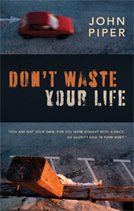
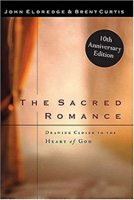 The Sacred Romance: Drawing Closer to the Heart of God
The Sacred Romance: Drawing Closer to the Heart of God 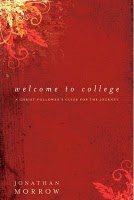 Welcome to College: A Christ-follower’s Guide for the Journey
Welcome to College: A Christ-follower’s Guide for the Journey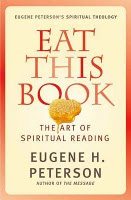 Eat This Book: The Art of Spiritual Reading
Eat This Book: The Art of Spiritual Reading 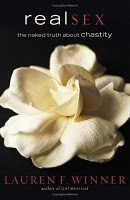 Real Sex: The Naked Truth about Chastity
Real Sex: The Naked Truth about Chastity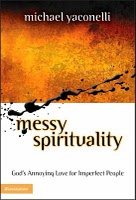 Messy Spirituality: God’s Annoying Love for Imperfect People
Messy Spirituality: God’s Annoying Love for Imperfect People 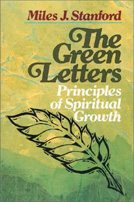
 5 Paths to the Love of Your Life: Defining Your Dating Style
5 Paths to the Love of Your Life: Defining Your Dating Style 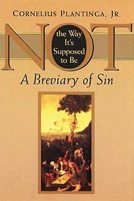 Not the Way It’s Supposed to Be: A Breviary of Sin
Not the Way It’s Supposed to Be: A Breviary of Sin